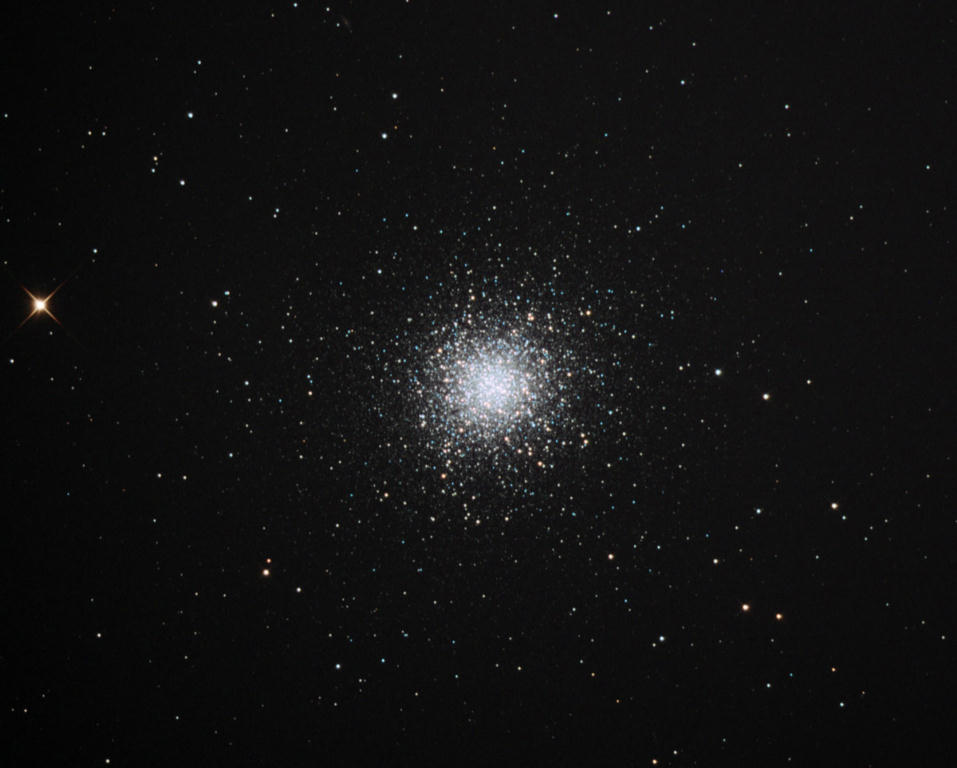10th August 2010
M27 Dumbbell Nebula
10" Newtonian, SXVR-M25C, 12*5 minutes
Guiding with OAG and
Lodestar. Guiding was quite good, but the image is spoiled by the focus being
very poor. Focus on the target before M27 was good, but I did not check focus
after slewing to M27. Bad mistake!

M57 Ring Nebula
10" Newtonian, SXVR-M25C, 7*5 minutes
Good
focus but guiding was a bit off, hence elongated stars. M57 is only 4
arcminutes in size - 32 would fit across one frame. This image is a crop of the
central part.
It is my first image that shows 3 stars within the nebula.
Only the central star (mag 15.75) is actually inside the nebula. The other two
are probably foreground or background stars.

15th August
M13 Globular
Cluster
10" Newtonian, SXVR-M25C, 7*6 minutes
First
attempt with the guiding to the mount set to 'Telescope' and not 'Ascom
Direct'. Guiding in RA was phenomenally accurate, with errors below 0.2 pixels.
DEC guiding was equally good at times, but then excursions up to 1.5 pixels
would ruin the frame, resulting in many frames being discarded.

18th August 2010
M27 Dumbbell
Nebula
10" Newtonian, SXVR-M25C, 6*6 minutes
Focus good
this time, but only the first frame was in clear sky - then wispy cloud came
in.

23rd August 2010
M92
10" Newtonian, SXVR-M25C, 13*6 minutes
Focus drifted
badly, full Moon and windy conditions conspired against me.

29th August
M57 Ring
Nebula
10" Newtonian, SXVR-M25C, 19*6 minutes
Bright Moon
raised the sky background. Focus and tracking were good but stars still a bit
elliptical, probably due to focuser tilt. However, the central star is the
smallest and sharpest I have yet obtained, and there is some detail visible in
the wispy green stuff inside the nebula.

Different processing, using only the best 7 frames.


Interesting star near M57. It is quite prominent in the DSS image, but faded considerably in my image.
Cartes du Ciel gives the star as GSC2643.1656, magnitude 12.63+/-0.40
Stellarium gives the magnitude as 15.35
RA 18h54m10.01s
DE +32°49'51.2"

Rob Januszewski pointed out that the star is actually RX Lyrae, which is a Mira type variable star.
The magnitude varies from 10.9 to 16.0 over a period of 247.82 days.
This prompted me to dig out old images of M57 and look for the star. In each image the star is at the centre.




However, the change in brightness is obvious, with May 2010 being the brightest.
(Mira variables are red giants whose surfaces oscillate in such a way as to increase and decrease in brightness over periods ranging from about 80 to more than 1,000 days).